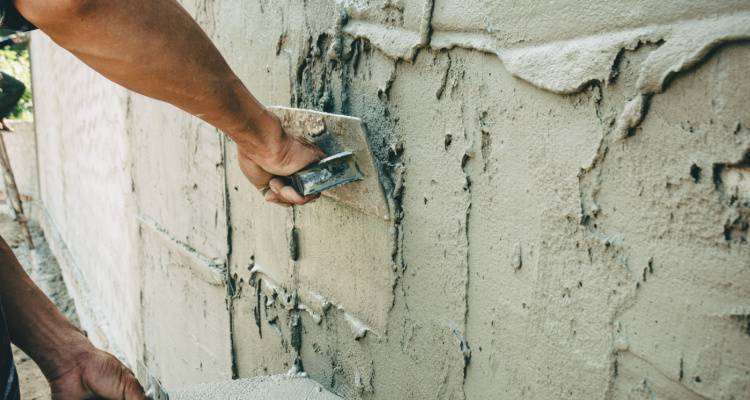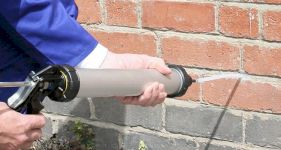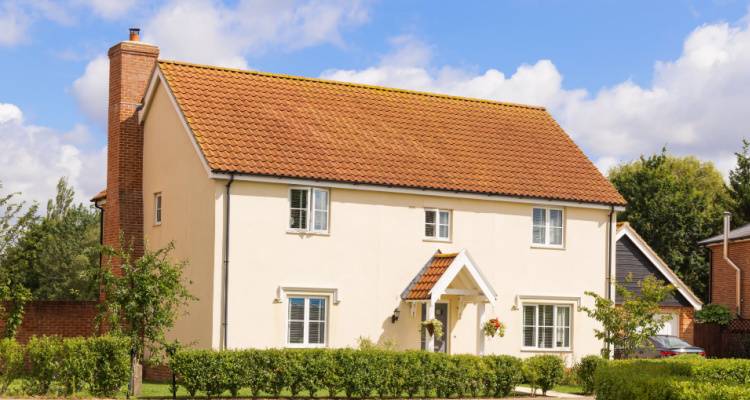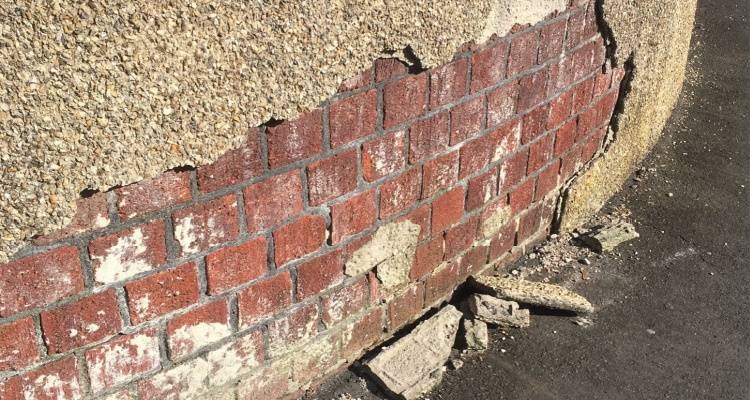Monocouche Render Cost
- The average cost of monocouche rendering is £37 per m².
- For an average semi-detached house of around 200m² the total cost will be in the region of £8,750.
- An overview of how much monocouche rendering costs for different-sized houses.
- Hidden costs, labour charges, and supply costs associated with monocouche rendering.
- Additional considerations for your monocouche rendering project.
Monocouche render is a time-effective external property coating that offers all the benefits of traditional render with a sleek, pre-coloured finish. Once applied, the dry powder settles to give breathability, durability and weather resistance for 15 to 25 years.
In this article, we’ll be looking at the average cost of monocouche rendering, including supply, labour, and any hidden costs you should be aware of when booking your job.
Ready to get a quote for the cost of monocouche rendering your home?
With MyJobQuote you can connect with monocouche render contractors in your area who can give you a free, no obligation quote.
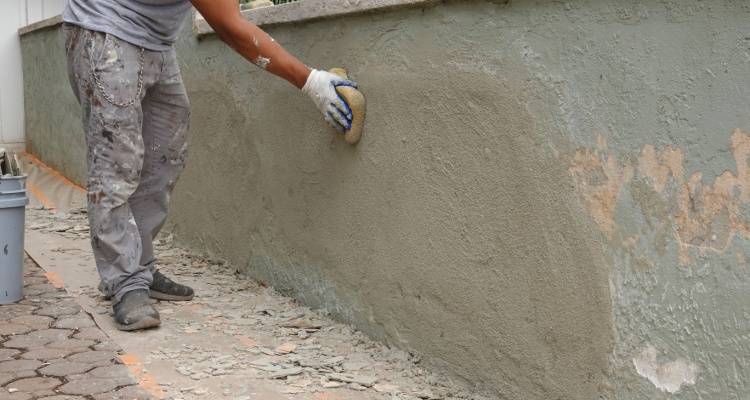
£8,750
Table of Contents
- How Much is Monocouche Rendering?
- Supply Cost of Monocouche Rendering
- Additional Monocouche Rendering Costs
- Labour Cost of Monocouche Rendering & Timescales
- Factors That Impact Monocouche Rendering Costs
- Planning Permission and Building Regulations Related to Monocouche Rendering
- Alternative Render Types to Monocouche Rendering
- Removing Existing Rendering: Considerations and Costs for Monocouche Rendering
- Checklist: Hiring Contractors for Monocouche Rendering
- FAQs
How Much is Monocouche Rendering?
Monocouche render cost per m² starts at around £35 and can rise to £75 for more bespoke colours. The overall cost of your render will be determined by the size of your house, with a semi-detached house of 200m² costing £7,000, and a detached home of 300m² starting at £10,500.
Monocouche Rendering Prices
| Property Type | Service | Estimated Cost | Time Required |
|---|---|---|---|
| 2-bed bungalow (100m²) | Monocouche render application, standard colour | £3,500 | 5 hours to 1 day |
| 2-bed bungalow (100m²) | Monocouche render application, bespoke colour | £4,000 | 5 hours to 1 day |
| 3-bed semi-detached (200m²) | Monocouche render application, standard colour | £7,000 | 5 hours to 1 day |
| 3-bed semi-detached (200m²) | Monocouche render application, bespoke colour | £7,500 | 5 hours to 1 day |
| 4-bed detached (300m²) | Monocouche render application, standard colour | £10,500 | 1 to 1 1/2 days |
| 4-bed detached (300m²) | Monocouche render application, bespoke colour | £11,000+ | 1 to 1 1/2 days |
Supply Cost of Monocouche Rendering
Where possible, it’s a good idea to take advantage of contractor price benefits, such as from bulk buying, as this will help to trim down your costs more than if you were to buy your supplies individually.
Monocouche render is sold in 25kg bags, which typically cost between £10 to £25. The price varies by brand, with premium, bespoke colours costing more than standard off-the-shelf options.
For budgeting, a 25kg bag is generally sufficient to cover one square metre (1m²). This is based on achieving the standard finished (scraped) thickness of 15-16mm.
While the material cost per bag is higher than for traditional sand and cement, this is offset by significant labour savings. Monocouche is "through-coloured," which eliminates the time and cost of a separate painting stage.
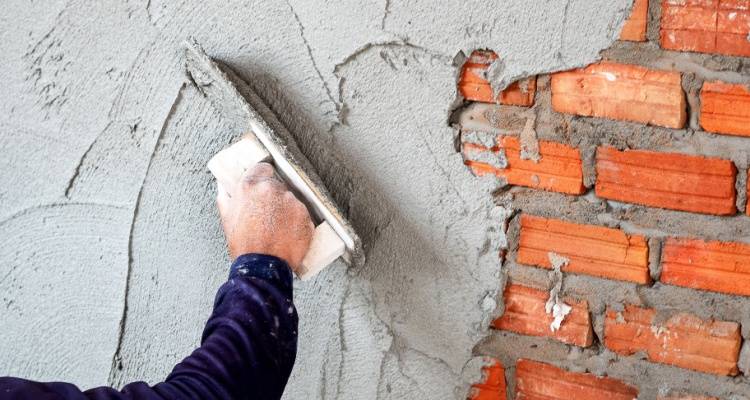
Your contractor can usually get these supplies at a trade discount, which helps reduce the overall project cost compared to buying the materials individually and offsets some of the labour costs.
The table below provides a breakdown of typical supply only monocouche rendering costs for different property types, including the price difference between standard and bespoke colours.
| Property Type | Approx. Render Area | Estimated Supply Cost (Materials Only) |
|---|---|---|
| 2-bed bungalow | 100m² | £1,000-£2,500 |
| 3-bed semi-detached | 200m² | £2,000-£5,000 |
| 4-bed detached | 300m² | £3,000-£7,500 |
Additional Monocouche Rendering Costs
Scaffolding
Scaffolding is likely to cost between £750 to £900 to fit a semi-detached house for painting or plastering access, with the cost rising to £900 to £1,150 for a detached property. This is for a 1-week hire period, and prices can fluctuate based on your location and the period of your hire.
Waste Disposal and Skip Hire
If you are having old rendering removed, you are likely to need a skip present. Mini skips are around £90, while the largest skips can cost closer to £800.
Large skips are most suited to rendering projects. A 20-yard skip will cost between £300 to £600, with a 40-yard costing between £400 to £800.
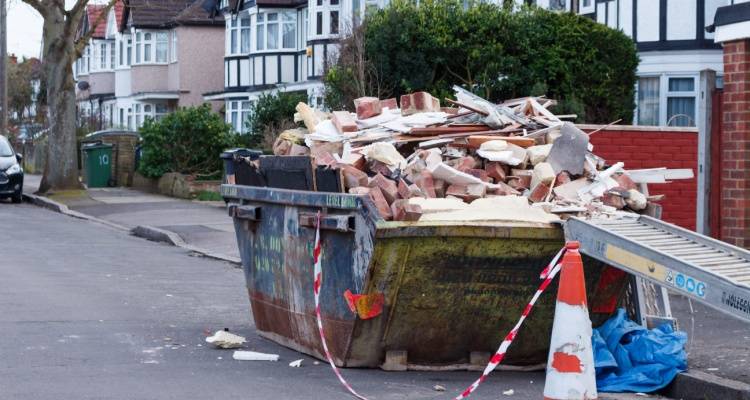
Costs in London are expected to be between £50 to £350 higher than in other locations, such as the North of the UK, due to increased demand. You will need to ensure that your skip is suitable for the type of waste you will be producing, as incorrect labelling can lead to fines.
Permits
You’ll need to check with your local council to see if you need a permit for your skip hire, which can range from £10 to £70 depending on your location. You can face fines of £1,000 if you don’t get a permit before having your skip delivered if you’re storing it on the roadside.
Labour Cost of Monocouche Rendering & Timescales
A primary cost benefit of monocouche render is its rapid application, which often results in lower overall labour charges compared to traditional rendering.
The main reason for this saving is efficiency. Unlike traditional sand and cement render, which requires multiple coats with drying time in between, followed by a separate job of painting, monocouche is different. As its name (French for 'one coat') suggests, it is a single, 'through-coloured' product. This means the render and colour are applied in one go, completely removing the time and labour cost of a separate painting stage.
Therefore, while the supply cost per bag for monocouche is higher, the labour cost is often significantly lower because the project can be completed much faster.
When getting quotes, always ask if labour is included. A rendering specialist's day rate is typically between £130 and £250. It’s also worth noting that your contractor may be able to get a trade discount on supplies by bulk-buying, which can help offset the higher material cost.
Factors That Impact Monocouche Rendering Costs
The final quote for your rendering project will depend on several key factors. Understanding these variables will help you see where your money is going and how you might be able to budget effectively.
Wall Condition and Preparation
Before any new render is applied, the underlying wall (or substrate) must be sound, clean, and stable. If you are removing old render, such as pebbledash, the removal process can sometimes damage the brickwork beneath. Any repairs to this substrate must be completed before the monocouche is applied, which will add to your costs.
Repairing damaged brickwork commonly costs between £150 to £350, depending on the extent of the damage.
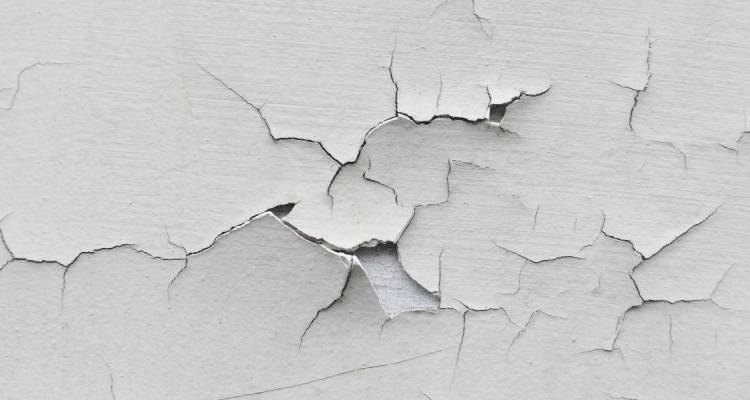
Property Size and Access
The total square meterage of your home is the most direct cost factor. However, how that area is accessed is just as important. A single-storey bungalow will be far cheaper to render than a three-storey townhouse.
Complex scaffolding will be required for multi-storey homes or houses built on uneven land, which will significantly increase the price. If the scaffolding overhangs a public pavement, you may also need a special permit from your local council.
Location
Where you live in the UK affects both labour and logistical costs:
- Labour Rates: Expect to pay higher day rates for tradespeople in major cities (especially London) and the South East, where demand is higher.
- Permits: If your home lacks a private driveway, you will have to pay for permits. This can include parking permits for the contractor's van and a skip permit from your local council. A skip permit can range from £10 to £70, and you risk a fine of up to £1,000 if you place a skip on the road without one.
Type of Finish and Application Process
As there are different finishes available with monocouche rendering, the price can vary depending on what you choose. A smooth finish will be quicker to apply, therefore yielding a lower price, while a patterned or render mixed with additional aggregates will be higher.
Scraped or textured finishes require more time and skill, and can add £3 to £8 per m² to your cost. While more intricate, bespoke finishes, such as creating patterned effects or adding coursing lines, are the most labour-intensive and can add £10 to £15 per m² in custom labour charges.
Opting for a smooth finish and choosing an off-the-shelf colour instead of having something bespoke colour-matched is the most cost-effective option. It is not recommended that you attempt to DIY monocouche render as failure to lay the render correctly can lead to costly repairs further down the line.
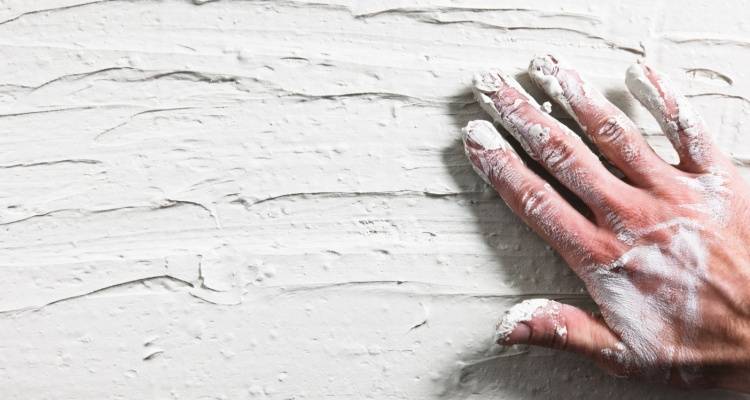
Planning Permission and Building Regulations Related to Monocouche Rendering
Before starting your project, you must consider two separate sets of rules: Planning Permission, which governs your home's external appearance, and Building Regulations, which govern its thermal and structural performance.
Planning Permission (Appearance)
For most homeowners, applying a new render is considered permitted development, meaning you do not need to apply for planning permission. However, this right is removed in the following instances:
- Listed Buildings: If your home is listed (e.g., Grade 2), you will almost certainly be forbidden from using a modern, cement-based render like monocouche. These properties require traditional, breathable lime-based renders to prevent moisture from being trapped, which can cause severe structural damage. You must consult with your local conservation officer.
- Conservation Areas: You will face restrictions designed to protect the area's character. You must check with your local planning authority before starting, as your choice of colour and finish may be limited.
Building Regulations (Performance and Safety)
Even if you do not need planning permission, your project must still comply with Building Regulations. The most important rule relates to insulation.
If your rendering project (whether new or replacing an old layer) covers 25% or more of an external wall, it is legally defined as a Renovation of a Thermal Element.
This means you are legally required to upgrade the wall's insulation to meet current standards measured by its U-value, or thermal transmittance. If your home's existing walls are uninsulated, this may require adding insulation as part of the job, which can significantly impact your project's total cost.
Your monocouche render contractor must ensure the work meets these thermal standards, as well as standards for fire safety and structural stability. Always check with your local council's Building Control department, or use a contractor registered with a Competent Person Scheme, to ensure your project is fully compliant.
Alternative Render Types to Monocouche Rendering
Perhaps you haven’t fully decided on the type of rendering you want to install - let’s look at a few different options, covering render, cladding and painting - to give you a broader idea of what’s available.
Render Over Existing Render
For homeowners with a stable layer of render on their homes, it’s possible to render over the existing render to save the time and effort of removing the original layer. It’s important to note that if you have any surface issues such as cracks or breaks, these will need to be repaired before the new monocouche render is added, which will cost between £100 and £350 for small patch repairs, depending on your type of render.
This solution will still be less labour-intensive than complete removal and can give satisfying results if you simply want a clean canvas. This can cost anywhere from £3,000 to £6,000, depending on the size of your home and the height, and duration of equipment hire such as scaffolding and skips.
Clad Over Existing Render
If you want to change the look of your home’s exterior, but not necessarily use rendering as your medium, you can opt to install cladding over your rendering. This is subject to your render being in good condition, as any problems with the surface will just be locked in and harder to fix once the cladding has been installed.
The cost of cladding installation is around £3,800 and will take anywhere from two to three days, making it more time-efficient than removal of the existing render. Depending on your cladding material (timber, uPVC or aluminium) you will encounter different costs, with timber being the cheapest and aluminium being the most expensive option.
Paint Over Existing Render
If your existing render surface is in good condition, you can choose to paint over your existing render. This is a good option for homeowners who want to inject new life into their home by painting the exterior , but don’t want the hassle of a full render removal if it’s not necessary.
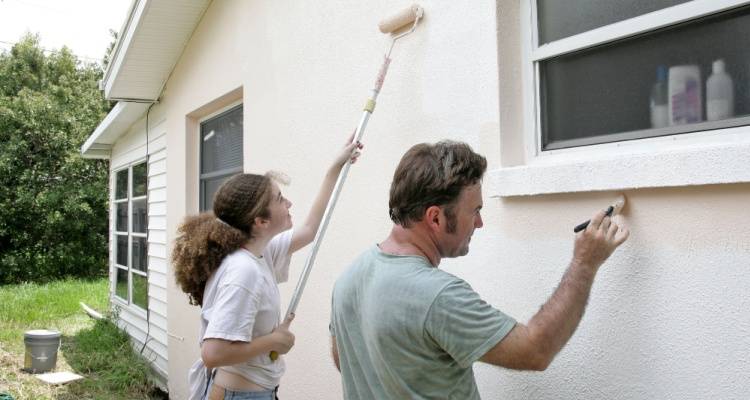
To ensure this is the case, your contractor must assess your property’s exterior for any defects, and fill these in before any masonry painting happens, as the cracks will become more obvious when paint is used. You also want to preserve the structural integrity of the existing rendering, so opting to fix these problems before you install something new is the best route for success.
Prices for masonry paint vary, but you can find 5-litre tubs for around £15, giving you a cost range of between £10 to £25 per m². This equates to £800 to £2,000 for supply costs only for a two-bed semi-detached house. You will then need to add on equipment costs, such as scaffolding, as well as factoring in your labourer’s day rate.
Different Types of Render
Here are some other types of render you may be interested in:
Removing Existing Rendering: Considerations and Costs for Monocouche Rendering
The condition of your existing rendering will directly impact the price you pay for its removal — and subsequent repairs to the substrate, if needed.
If your existing rendering is in poor condition, chipping and breaking away, it’s best to have it removed entirely before applying new rendering. Failure to do so can lead to a catastrophic failure of both new and old render, and cause both layers to fall off your property.
For example, if you currently have pebbledash rendering on your property, you will likely want to remove it to ensure you get an even application of your new monocouche render. The cost of removing pebbledash render can be anywhere from £2,100 to £7,800 and above (depending on your house size.)
Additional costs should be factored in for any necessary repair work to your substrate before work on the new render can begin too.
Checklist: Hiring Contractors for Monocouche Rendering
Consider these key points before hiring a contractor to carry out your monocouche rendering:
- Are they experienced with monocouche render? – Choose a contractor who regularly works with monocouche systems and can show examples of recent jobs or manufacturer-approved training.
- Are they qualified? – Look for renderers with NVQ or City & Guilds qualifications in plastering or rendering. Membership of the Federation of Master Builders (FMB) or registration with TrustMark is also a good sign.
- Are they insured? A renderer should hold public liability insurance (at least £2 million). This protects you in case of damage to your property or accidents on site.
- Is scaffolding and waste removal included? Confirm that access equipment, debris removal, and site cleanup are all included in the quoted cost.
- Do they have positive reviews? Check their MyJobQuote profile to see feedback from previous customers, focusing on reliability, cleanliness, and quality of finish.
- Can you view their past work? Ask to see photos or addresses of recently completed projects so you can judge the finish for yourself.
- What are the payment terms? Always agree on payment terms before work begins. Avoid large upfront payments; a 10–20% deposit is typical, with the balance due on completion.
- Do they offer a guarantee? Reputable contractors should provide a workmanship guarantee, and some monocouche manufacturers offer extended warranties if the installer is approved.
Aim to get at least 3 quotes from local monocouche rendering specialists. This will help you compare rates and ensure you’re hiring someone who’s the right fit for your project.


